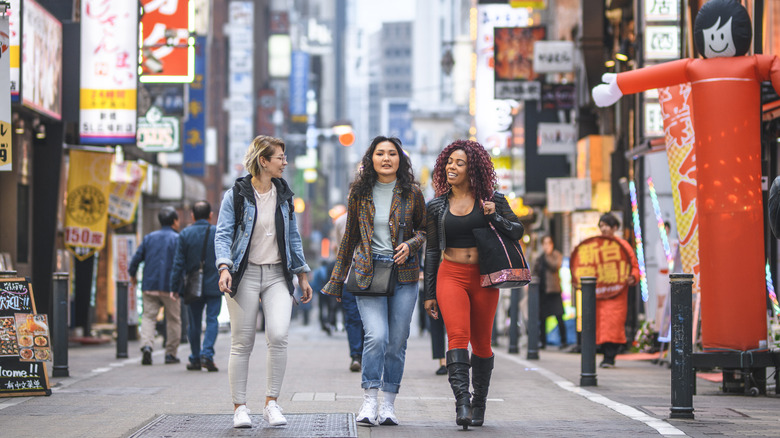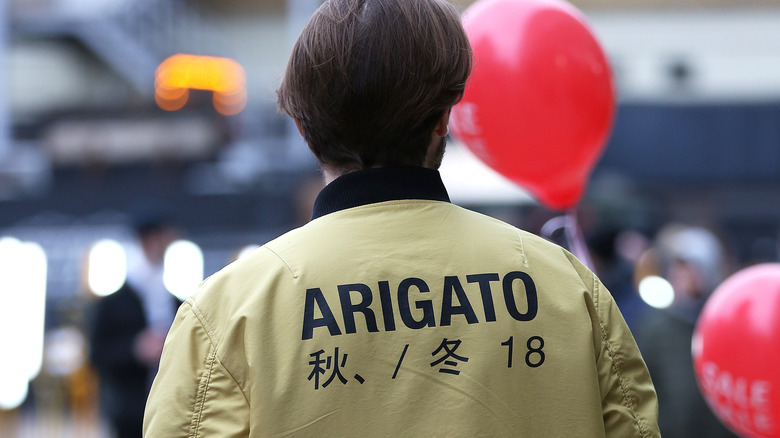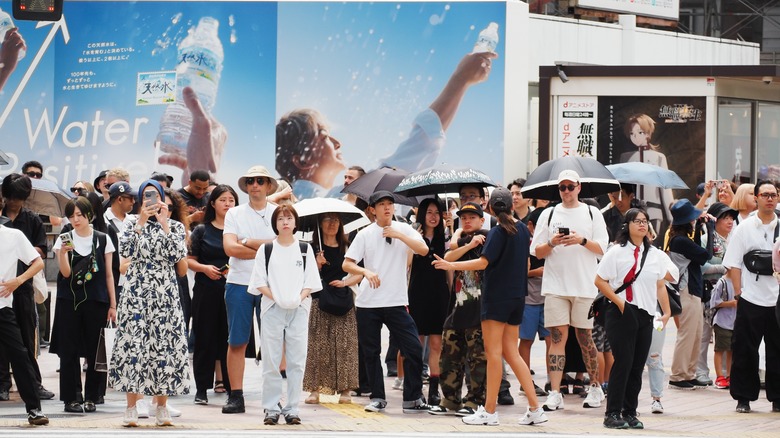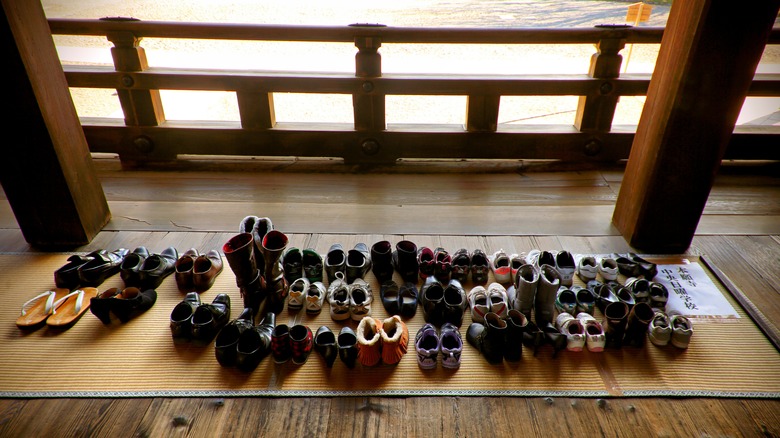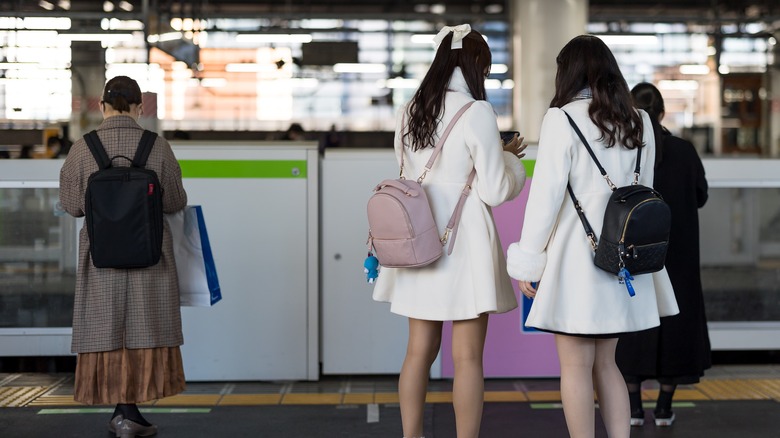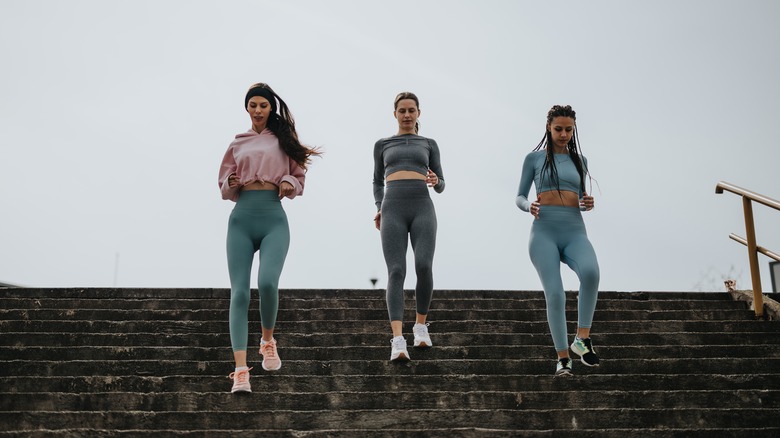Why Tourists Need To Be Cautious Of The Clothing They Pack On A Trip To Japan
Japan is revered for its one-of-a-kind culture, from its traditional tea ceremonies to its colorful modern anime. Unsurprisingly, the country's uniqueness also extends to its fashion norms. Japan is the birthplace of styles such as lolita and decora, yet when it comes to everyday wear, locals are known to dress fairly conservatively, favoring classic cuts and neutral colors.
This can make creating a travel capsule wardrobe a little challenging for tourists visiting Japan. Unless you've been to the Land of the Rising Sun already, it can be hard to determine which clothes will fit in on the streets of Tokyo and Kyoto and which will make you stand out as a clueless tourist. And besides sticking out like a sore thumb, some clothing items may be impractical for time spent sightseeing in Japan, even if they work just fine back in your home country.
Of course, that doesn't mean you need to limit yourself when packing your bags. And you definitely shouldn't count on buying new outfits on the spot, as clothes shopping in Japan can be disappointing for tourists. A few simple guidelines will ensure you're both comfortable and oshare (that's the Japanese word for "stylish") during your trip.
Your Japan-inspired clothing could offend locals
If you're in Japan long enough, you'll notice random English (and sometimes French) words and phrases printed on T-shirts, bento boxes, backpacks, and pencil cases. They often seem out of place and nonsensical, but to many locals, they seem fashionable simply because the text looks exotic. It doesn't matter if the words don't really make sense.
A similar trend has taken off in Western countries, where Japanese phrases are scribbled on sweatshirts and other clothing items, signaling an interest in Japanese culture — even if the wearer doesn't know exactly what the words mean. Sound familiar? You may have an article of clothing like this in your closet, but be mindful when wearing it in Japan. If you're not confident about the text's meaning, you could inadvertently be wearing an offensive phrase. Or, at best, your clothing may just look silly — kind of like when someone in Asia wears a shirt that reads "keep it smile" or "cool flower let's go!"
You may also want to avoid clothing with various Chinese characters, unless you're fluent in the language. Japan has three writing systems, one of which borrows from Chinese. That bag or hoodie with an indeterminate phrase might mean something to locals in Japan.
The wrong clothes could put you at risk of heatstroke
Each year, thousands of people in Japan visit hospitals for heatstroke. According to Nippon.com, approximately 1,300 people die each year from the condition. Heatstroke occurs when the body is exposed to high temperatures and can no longer keep itself cool, resulting in nausea and vomiting, rapid breathing, increased heart rate, and even death. While there are many potential risk factors, wearing hot and stuffy clothes is an easy one to fix.
Japanese summers can be intensely hot, especially if you're walking around the city streets or hanging out at outdoor spots like Tokyo Disneyland. It's crucial to dress appropriately to keep your body cool. In Japan, you'll notice that people don't often expose a lot of skin (more on that later), but they still dress for the weather by opting for loose-fitting, breathable garments. If you're packing for a summer getaway, leave your tight and stretchy pieces at home and go for flowy T-shirts and blouses instead. Additionally, avoid dark-colored clothes and fabrics such as wool, silk, polyester, and acrylic, which are known to trap heat.
Finally, consider packing one common Japanese accessory: a UV-blocking umbrella. Carrying an umbrella on a sunny day may seem strange, but it's a typical way to stay cool in Japan. In 2019, Environment Minister Yoshiaki Harada claimed that using a sun umbrella can reduce heat stress by 5.4 degrees Fahrenheit and mitigate sweat by 20%.
Choose your footwear carefully in Japan
People in Japan are known to be stylish and put-together, but that doesn't mean you need fancy footwear to fit in. Spindly high heels, for instance, aren't a common sight, and will likely just cause unnecessary pain on sightseeing days. Similarly, there's no need for men to wear dress shoes to look good. A clean pair of sneakers, flats, or supportive loafers will look just fine in most situations.
You should also be mindful of sandals and open-toed shoes if you plan to take the city trains. At rush hour, the commuter trains are known to get crowded, and you'll likely be squished between several other riders. In these cases, it's not unusual for people to accidentally step on each other's feet — which can be a painful experience if your toes aren't protected.
Along with these points, remember to bring shoes that are easy to put on and take off. Some izakayas, traditional restaurants, onsens, and temples will require you to remove your shoes upon entering. To avoid taking time or blocking the doorway, it's best to wear footwear that can easily slip on and off.
Revealing clothes may attract unwanted attention
If your goal is fitting more outfits in your carry-on, you might prioritize itty-bitty tops and bottoms with short hemlines. After all, less fabric means more space in your suitcase, right? While this might work just fine in some destinations, you may attract unwanted attention in Japan. Revealing clothing, particularly for women, isn't standard in Japanese fashion. Therefore, strappy camisoles and low-cut tops won't usually leave a positive impression, and in some areas (such as those known for nightlife and love hotels), you might receive some unwanted attention.
Short skirts and dresses can attract another type of unwanted attention: upskirt photography. Escalators and crowded trains are among the spots where chikan (Japanese for "pervert") are known to sneakily take photos up women's skirts without their consent. While your choice of clothing is never an excuse for this type of behavior, you may want to be extra cautious when wearing mini skirts and similar garments. A pair of shorts or opaque tights worn underneath can offer a layer of protection in case you're targeted by creeps.
Athleisure will make you stand out as a tourist
It can be hard to hide that you're a tourist in Japan, especially if you don't speak fluent Japanese. With that said, your clothes can make you seem like even more of an outsider, before you utter a single word. One style of clothing that will immediately out you as a tourist is athleisure, including sports bras, jerseys, basketball shorts, leggings, and crop tops.
Athleisure may be everyday wear in many countries around the world, but that's not the case in Japan. In the East Asian nation, people typically wear yoga pants and stretchy sweat-wicking tops to the gym, not to meet up with friends. Instead, casual outfits tend to include easygoing blouses, wide pants, long skirts, basic T-shirts, simple sweaters, and easygoing button-up shirts. You might also notice people wearing athleisure-adjacent pieces, such as sweatpants and hooded sweatshirts, albeit styled in a trendy way.
Of course, if you're most comfortable in a pair of leggings or gym shorts, you won't be shunned by most locals. This is especially true if you're sticking to casual restaurants and attractions. However, if you plan to visit a traditional shrine or temple or reserve a table at an upscale restaurant, be prepared to ditch the workout gear.
